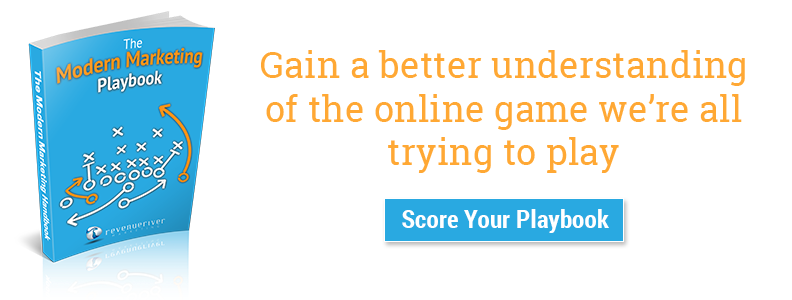
With all of today's digital marketing techniques, tactics, and tools it can get a little complicated.
There's a lot to create, connect, and promote every time you turn around and it can get pretty damn confusing. If you're trying to drive results for your business or your boss you probably have a few questions you'd like answered.

-
How do I get my email marketing to support with my social media efforts?
-
How do I get my blog strategy to help my premium content get downloaded?
-
How do I align my assets with promotion strategy and drive a single result?
All great marketing campaigns must start with strategy, contain careful planning, and end with great execution. To help you get from start to finish I'm putting together this handy little 4 step reference guide. Every time you get ready to launch a new campaign you can pull this up and filter your plans through it.
4 Steps To Launching A Great Marketing Campaign
First Step, Setting A Goal
Setting goals for your campaign sounds cliche but it's a bit more complex than that. Remember, all of your assets and all of your promotion around the campaign should contribute towards the goal. The reason why your previous campaigns haven't been as successful as you'd like could be because of goal setting flaws.
-
Your goal needs to be specific
-
Your goal needs to be measurable
-
It needs to be realistic & attainable
-
And your goal needs to be time bound
Make your goal look like: From X to Y by When.
Let's say you sell software as a service (SaaS). If you're going to put together an inbound marketing campaign that your VP of Business Development will find valuable it has to feed the bottom line. You don't however, control the sales cycle so you shouldn't set a goal for new clients or revenue. You should probably build your goal around sales-ready lead creation, something like a free demo.
If you're goaling around demos you'll need to create enough demos to setup the sales team to be successful and form a big enough impact to impress your VP. Assume the sales department closes 10% of their leads (SaaS sales are typically long and complicated but highly lucrative). If you want to generate a new customer you better set at least 10 demos for the campaign.
Define your goal: Set 10 new demo appointments by end of Q1 2015.
You could also define your goal differently if you're already producing free demos and you just want to increase the pace of conversions, something like: Increase the number of free demos by 200% by end of Q1 2015.
Second Step, Crafting Your Assets
Staying with the example, we know we have an important asset to promote but hopefully that's not all we have to work with. In order to really drive as many leads as possible we need to feed all phases of the decision making process. Because a demo is typically only requested by those ready to make a decision you'll want to position some additional assets around the demo, feeding other potential leads' desire to learn more about the solution the software provides and some additional information or tools that help them decide whether or not you're a credible provider.
You'll also need a host of additional assets in place before you start promotion, here's a list of additional elements to put together as you plan your campaign.
-
Awareness Offer - eBook, Webinar, or Whitepaper
-
Consideration Offer - Case Study or a Savi`ngs Calculation
-
Decision Offer - Free Demo or Sales Consultation
-
Calls-to-Action (CTA) to advertise each offer
-
Landing Pages to further detail the offer with forms for download for each offer
-
Thank You Pages to provide instant access to the offer and present the next step
-
Automated Work Flows to ensure all leads get the appropriate email communication
Make sure you have each of these assets complete. They should be well-designed, professional, and directed to the persona you're targeting. If you're trying to sell a demo you should make sure you understand who exactly would be interested in that demo (probably a VP level, not the business owner for example).
Third Step, Craft Your Marketing Actions
With your assets in place it's time to put together the promotional actions you're going to take. You might have a little money to spend in support, but you better not waste your budget by publishing ill-conceived ads with disconnected messages and click-throughs. To get it right, start with all of the actions you have at your disposal
-
Email Marketing - you'll want to design nurturing emails for your various segmented lists based on the intelligence you've gathered. You'll want to choose the assets you believe will serve each segment the best and messaging to help you capture re-conversions towards your campaign goals.
-
Social Media Marketing - Social is a great way to promote your assets. You should start by laying out all of the relevant articles on your blog, the offers you've built, and the assets that sit in support of your goal. Then put together a healthy mix of content for all channels. Be sure to stage your content out in advance, using a calendar and social posting platform to organize your content.
-
Website Promotion - Remember, if you're going to run any marketing campaign your website should sit as the foundation. While many of your marketing efforts will focus on driving interested traffic to your website you should also prepare to convert as much of your other traffic as possible. That means positioning offers for all stages of their decision process throughout your website in support of your campaign.
-
Blogging - Three areas to consider with your blog as it relates to campaign strategy: First, what existing articles are topically appropriate to support your campaign? Make a list and review each article to update it with revised content where needed and fresh new CTA. Second, build your editorial calendar to feature topics meant to promote your premium content throughout the duration of the campaign. Finally, to attract an even broader readership you should focus a couple of articles for guest posting. Target blog readerships that your premium content offers will resonate with and spend some time making sure your articles are highly resourceful.
-
Advertising - You should always consider traditional advertising methods and digital advertising options for campaign support. If you're able to devote an advertising budget to your campaign the strategy should be to support your campaign with some additional targeted attention. You have a lot of choices for your advertising dollars these days, you'll need to make good decisions for whether you should spend on PPC, social media advertising, trade publications, print assets, etc.
-
Public Relations - While this isn't exactly a core inbound marketing technique either, it certainly can help boost traffic, interest and pickup of your campaign when applicable. My suggestion is not to force PR, if your campaign isn't newsworthy you probably won't get a lot of traction with a press release. However, if you can make some news by finding something truly worthy of distribution then work your angles and connect the dots with links to campaign assets.
Fourth Step, Build The Schedule
You have a goal you're trying to hit, the assets necessary to produce results, and the promotion strategy all ready to go. Your final step has to be scheduling to maximize effectiveness and efficiency. You probably don't have an endless budget so you better time your spending correctly and coordinate all of your marketing actions. Fall on your face here and you'll never realize the potential your campaign had when you put the strategy and assets all together.
Build a Timeline. A visual timeline can really help you see the campaign in a simple fashion. Put together all of the period (could be days, weeks, or months) from start to finish of the campaign. Then add all of the marketing actions you're planning. This is a great exercise to do on the whiteboard so you can move stuff around and really collaborate between team members.
Build a Calendar. The next step to ensure nothing gets missed is to build out a calendar of events that can be communicated between everyone involved with the execution once launched. Your marketing software, project management software, or even your email provider should have a calendar you can use to plan your events, assign tasks, set reminders, and update status as you go.
One Last Tip
If you want to drive the desired results you have to have the tools for the job. If you're missing pieces you're going to have to make a decision. Do you cobble another piece of software together to help you fill the gap or do you invest in a holistic solution that will enable you to run everything at once, in one place. That's a big step, I know. If you want to chat about what you have and what you don't have just give me a call, I'd be happy to talk you through what we do and use, and why.
If you like this article, share it please!

